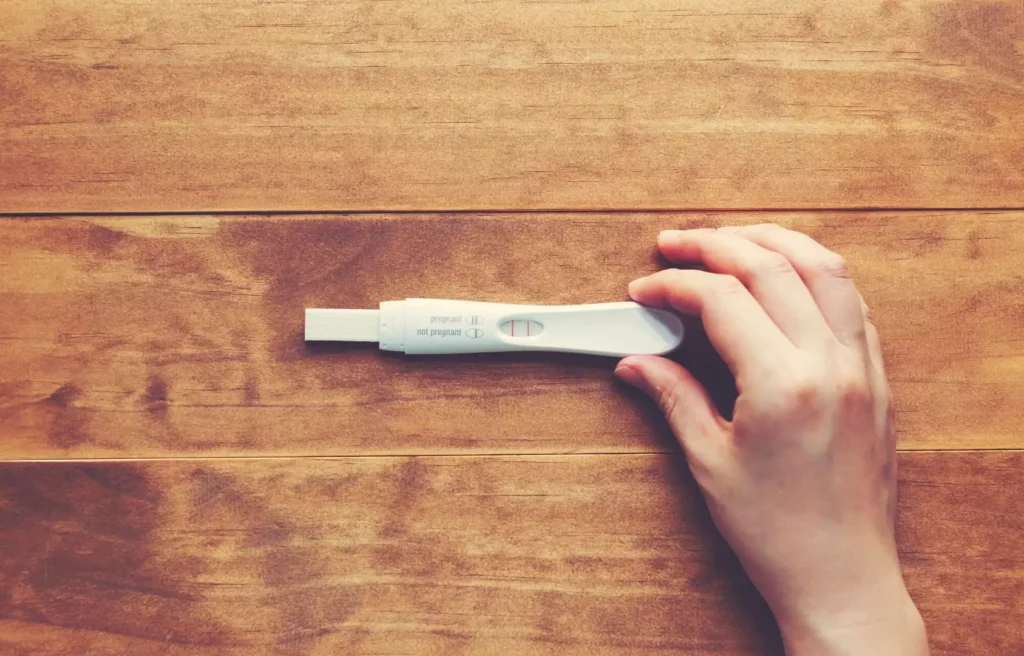Table of Contents
When is the best time to get pregnant? (guest )
Are you wondering when the best time to get pregnant is? When trying for a baby, the hit-and-miss technique hardly ever works. Believe it or not, there is a proper procedure and timeline to the process.
You are planning on parenthood. A new, exciting journey awaits you and your partner. Your family is about to grow and since this is an important time for you, you want everything to progress smoothly. The starting point then would be to determine the best time to get pregnant.
Well, timing is everything when you are considering pregnancy. You can get pregnant only when you have unprotected sex with your partner during the most fertile window of your cycle.
Your fertile window opens four days prior to when you begin ovulating and lasts till a day after ovulation. Ovulation begins 12-14 days before your next menstrual cycle and is the best time to try successfully for a baby.
Since the fertile window does not stay open too long, you want to be absolutely sure about the timing of ovulation if you are keen on pregnancy. Consider using a reliable fertility monitor, like Inito, that can help track your fertile window and confirm your ovulation day easily. The device has been proven to increase the chances of pregnancy by 89%.
Ovulation is just a phase in your menstrual cycle. Your monthly period begins with the first day of your bleeding and ends with the start of your next period.
An overview of each phase of the cycle will give you the insight you need to make better decisions related to conception. The menstrual cycle, also called a period, is the time of the month when your uterine lining sheds in the event that pregnancy does not occur. Bleeding continues for anywhere between 3-7 days. During this time the estrogen and progesterone (hormones that regulate the menstrual cycle and support pregnancy) levels are low.
1. Follicular Phase:
This starts on the first day of your period and ends with ovulation, making it the longest part of your cycle. The level of estrogen rises during this phase as your egg prepares to get released.
2. Ovulation Phase:
An egg is released from your ovary due to rising estrogen levels during the follicular phase. The estrogen further triggers your pituitary gland, the ‘master gland’ of hormones present at the base of your brain, which in turn releases the luteinizing hormone (LH). This hormone plays a role in puberty, menstruation, and fertility. Thus begins the process of ovulation.
3. Luteal Phase:
This phase begins after ovulation occurs and continues until the start of your next period. There is a rise in progesterone and estrogen levels which thickens the lining of your uterus and readies it for the implantation of a fertilized egg. If you do not get pregnant, the hormone levels drop again and cause the onset of your period.
Now that we have taken you through the phases of your menstrual cycle, here’s your guide to the best time to get pregnant throughout the month.
Counting your chances: Here’s the best time to get pregnant
Your fertile window is the time your chances of pregnancy are highest. This window is marked four days before ovulation, the day of ovulation, and finally, a day post-ovulation. So how do you figure out your ovulation period? A good way to calculate is to mark your calendar for 12-14 days before your next period starts. This is approximately when you ovulate.
Since ovulation cycles vary from woman to woman, regulated by personal hormonal levels, there is no one consistent best time to get pregnant for women. Each individual will have to determine their fertile window with regards to how their ovulation cycle runs. An accurate way to keep track of your ovulation cycle is the Inito Fertility Monitor. The novel device can mark your 6-day fertile window for you, increasing your chances of getting pregnant by 89%.
What are some ovulation symptoms you can look out for?
- Breast pain: Cyclic mastalgia or breast pain during ovulation is common. Your breasts may be swollen or tender to the touch, or even feel sore and sensitive.
- Cervical mucus: Your vaginal discharge can tell you a lot about what’s happening in your body. Around the time of ovulation, a surge in the estrogen hormone results in the cervical mucus’ consistency resembling raw egg whites with a runny, transparent look.
- Basal body temperature: This body temperature fluctuates around the time of ovulation. It first dip before the ovary releases an egg and then rises slightly during the luteal phase. Tracking your BBT will help you determine your ovulation time.
- LH surge: The luteinizing hormone, produced by the pituitary gland and detected in pregnancy tests, rises to trigger ovulation. Typically, women will ovulate 24-36 hours after the LH surge and the levels then fall after ovulation.
Can you get pregnant during your period?
When an egg from your previous cycle remains unfertilized, the endometrium lining in your uterus sheds and sets off the process of menstruation. The bleeding lasts 3-7 days for most women. Since the egg was not fertilized and ovulation doesn’t begin for about two more weeks, chances of pregnancy during your period are not likely.
However, if you have shorter cycles, then your fertile window falls during your follicular phase and you may get pregnant during this time.
You can catch your fertile window next month when you ovulate and try your chances at successful conception.
Enhance your chances of pregnancy with these essential tips:
- Track your ovulation time. Look for ovulation signs like vaginal discharge, pain in the side of your pelvis, increase in body temperature, increased sex drive, and breast soreness.
- Try to have sex more often (every 1-2 days) during your fertile window to increase your chances of successfully getting pregnant.
- There is no evidence that specific sex positions improve the probability of conception. So, as long as you are enjoying with your partner, the sex position does not matter.
To know more about The Best Sex Position To Conceive, watch this video.
- If it’s time for your next cycle to begin and you’re still not pregnant, don’t worry. Consult your doctor or a fertility specialist who will check to see if your hormone levels are normal during the various phases of your cycle. They may advise a few tests to evaluate follicle-stimulating hormone (FSH), estrogen and progesterone levels.
Summary
- You can get pregnant only if you have unprotected sex during your fertile window.
- Your fertile window is 6 days – four days before ovulation, the day of ovulation, and one day after ovulation.
- Ovulation occurs 12-14 days before your next cycle.
- To accurately track your fertile window and confirm when ovulation occurs, using the Use the Inito Fertility Monitor is highly recommended.
To know more about the best time to get pregnant, check this video.
https://www.youtube.com/watch?v=e8Y6mWoRefQ
References
- Can You Get Pregnant on Your Period?. American Pregnancy Association. https://americanpregnancy.org/can-i-get-pregnant-if/can-you-get-pregnant-on-your-period/. Published 2022. Accessed February 18, 2022.
- Fertility Awareness-Based Methods of Family Planning. Acog.org. https://www.acog.org/womens-health/faqs/fertility-awareness-based-methods-of-family-planning. Published 2022. Accessed February 18, 2022.






